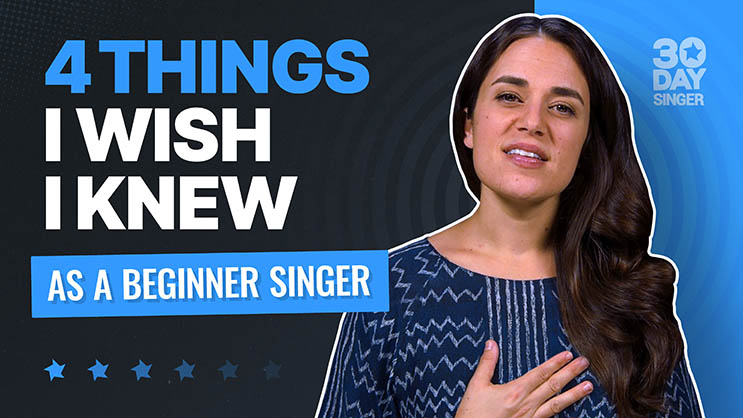30 Day Singer Blog - archives - page 7
Singing Techniques For Beginners

When learning how to sing, you might be overwhelmed with choices and options for the right singing lessons.
In this article we'll take a dive deep into the world of singing techniques.
Understanding the fundamentals of singing can take your vocal prowess to soaring heights.
And it's easier than you might think.
Do Online Singing Lessons Work?

You don't need a record deal or a fancy studio to fine-tune those vocal cords. Welcome to the era of online singing lessons, where the stage is your living room, and the only audience you need is yourself. Let's dive in and see what this digital lesson revolution is all about.
Singing Lessons - Do I Need Them?

Do you ever find yourself belting out your favorite tunes in the shower or humming along to the radio in the car, only to dream of hitting those high notes effortlessly? If so, you're not alone. Many of us want to learn how to sing, but the idea of formal singing lessons might seem intimidating. Well, fear not! Today, we're going to explore the wonderful world of singing lessons, demystify the process, and discover how they can transform you into a vocal virtuoso.
3 Best Vocal Warmups

The best way to learn how to get better at singing is simply to make sure you do your vocal warm ups. The voice is a delicate instrument, and without proper warmup, there's the possibility of damage occurring. In order to avoid that, and to ensure your voice is in the besr shape possible, let's look at 3 easy vocal warmups!
Take Care of Your Voice in 4 Ways

Being a singer is amazing: you have an instrument that literally no one else on the planet has. And it’s also frustrating: that instrument is a part of your body, meaning it changes due to things like hydration, allergies, illness, and fatigue. I’m Camille van Niekerk, singer & teacher with 30 Day Singer, and here are 4 ways to take care of your voice.
4 Things I Wish I Knew as a Beginner Singer

I’ve been singing for as long as I can remember. I don’t remember being taught how to match pitch or copy a melody. But there are so many skills I do remember learning, and I strive always to put myself in my student’s shoes as I’m teaching them a new skill. These are the 4 things I wish I knew when learning how to sing.
Smooth Your Vocal Tone in 3 Easy Steps

Most of us want a smooth, pleasant tone when we sing. But what can we practically do to get it? This lesson will walk you through a few concrete steps to achieve a smoother tone when you sing!
Pop Singing Tips

I'm Abram with 30 Day Singer and today we are going to go over some tips and exercises that will help you sing Pop music with better style. Pop music is constantly changing and the best way to stay in style is to listen to more pop music and experiment with your voice. As with any skill, the more you do it, the easier and more efficient it becomes!
Country Singing Tips

Remember that in addition to these techniques, your best teacher is your own ear! Singing along with great country singers and imitating their tone or pronunciation is a great way to learn. We don’t want to end up with an exact imitation of another singer's voice, but rather, we want to capture the style and tone, while still sounding like you - just the country version!
Singing Posture

Singing with good posture is not only good for easing tension, but it also helps with overall breath control and singing technique. This is the first thing that I check in with in my singing practice and I encourage singers to continually check their posture throughout the rest of their routine.

